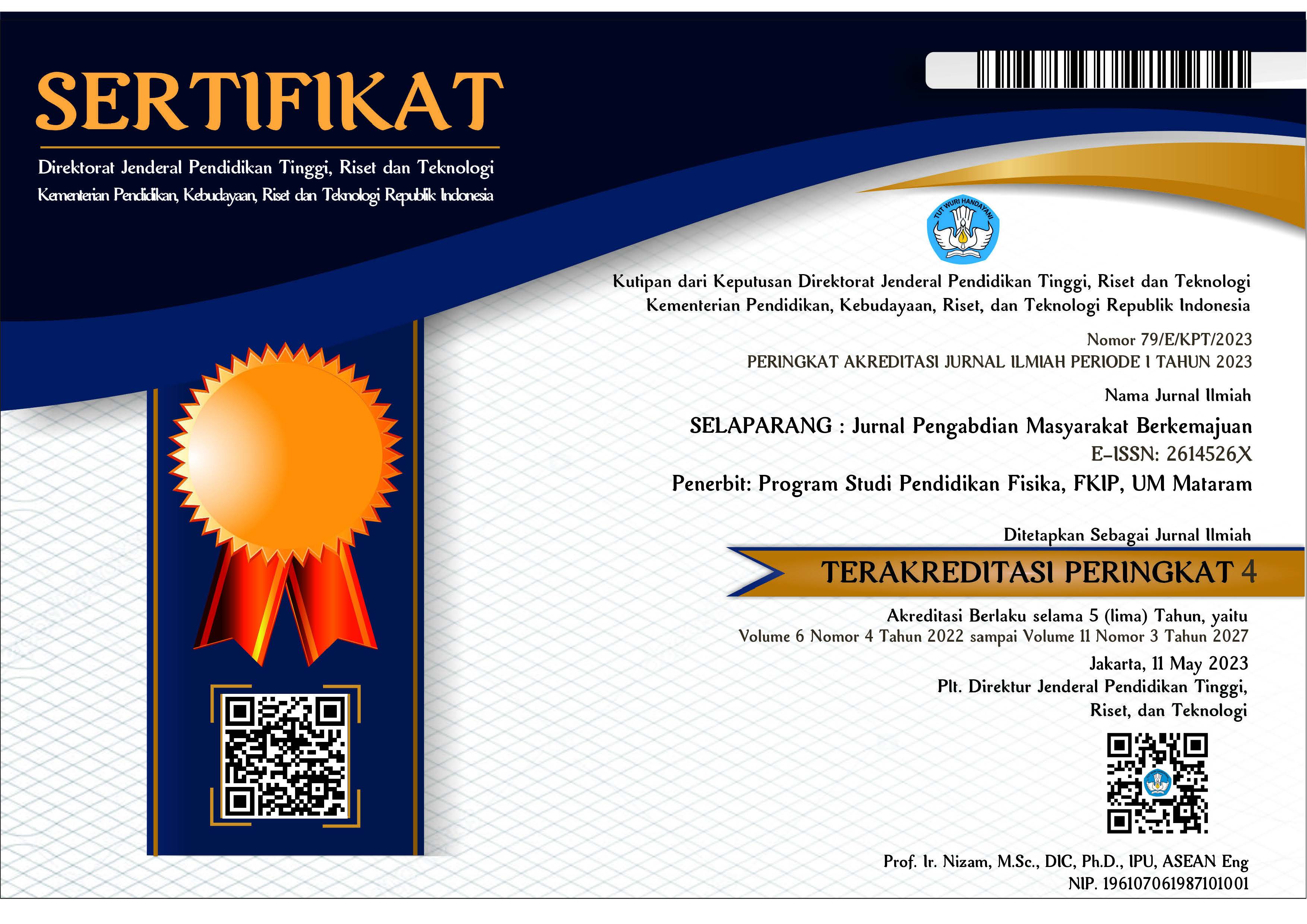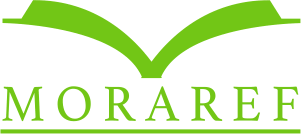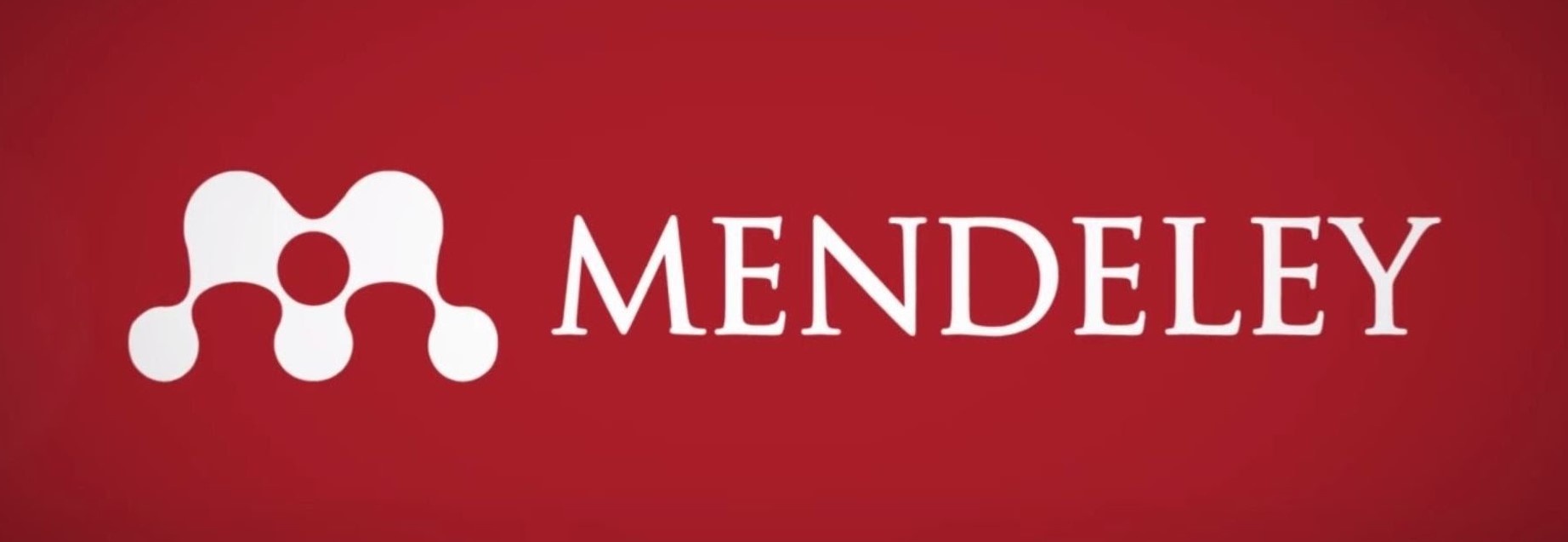Pengelolaan limbah kotoran sapi menggunakan bed vermicompost dan earthworm separator guna meningkatkan keberlanjutan usaha peternak di Desa Babatan – Jember
Abstract
Abstrak
Kelompok Peternak Inovatif dan Maju (PETINJU) di Desa Babatan Kabupaten Jember menghasilkan 1 ton kotoran sapi setiap bulan. Limbah tersebut belum dikelola dan cenderung berdampak negatif pada lingkungan dan kesehatan. Program implementasi IPTEK yang dilaksanakan bertujuan untuk mengelola limbah sekaligus meningkatkan keberlanjutan usaha kelompok PETINJU. Program dilaksanakan dengan pendekatan partisipatif, kolaboratif, dan berurutan. Pelaksanaan program diawali dengan pemantapan aktivitas, lalu diikuti dengan edukasi dan implementasi bed vermicompost serta earthworm separator, dan diakhiri dengan evaluasi kegiatan. Program ini berhasil menerapkan inovasi pengelolaan limbah kotoran sapi menjadi vermikompos. Sebanyak 85% kotoran sapi pada kelompok PETINJU berhasil dikelola setiap bulannya. Berdasarkan uji t terhadap self asessment mitra, diketahui nilai p yang sangat kecil, yaitu 1,38×10-7 untuk pengetahuan, 2,47×10-4 untuk keterampilan, dan 1,36×10-6 untuk motivasi mitra, menunjukkan peningkatan yang signifikan dalam ketiga aspek tersebut setelah pelatihan. Hasil analisis SWOT juga menunjukkan bahwa pengelolaan limbah kotoran sapi menjadi vermikompos memiliki peluang keberlanjutan yang tinggi. Kelompok PETINJU berpotensi memperoleh peluang ekonomi baru dalam hal penjualan produk vermikompos. Pada lain sisi, pengelolaan limbah akan meningkatkan sanitasi kandang yang berimplikasi pada peningkatan keuntungan dari usaha ternak. Program ini berhasil memberikan dampak pengurangan limbah sekaligus meningkatkan potensi ekonomi kelompok PETINJU.
Kata kunci: cacing; ekonomi; lingkungan; profit; vermikompos.
Abstract
The Innovative and Advanced Livestock Farmers Group (PETINJU) in Babatan Village, Jember Regency, produces approximately 1 ton of cow dung monthly, which, if improperly managed, poses significant environmental and health risks. To address these challenges and enhance the sustainability of PETINJU's operations, a technology implementation program was executed. This program comprised four key stages: activity organization, group education, application of specialized composting beds and earthworm separators, and outcome evaluation. The program effectively converted approximately 85% of the monthly cow dung into valuable vermicompost. Post-training evaluations demonstrated significant improvements in the participants' knowledge, skills, and motivation, as confirmed by t-test results: knowledge (p-value = 1.38×10⁻⁷), skills (p-value = 2.47×10⁻⁴), and motivation (p-value = 1.36×10⁻⁶), indicating substantial enhancement in these domains. Furthermore, the analysis underscored the long-term viability of cow dung conversion into vermicompost as a sustainable practice. The sale of vermicompost presents a lucrative opportunity for PETINJU, while improved waste management practices contribute to enhanced livestock pen hygiene and increased profitability. In conclusion, this program not only mitigated waste management issues but also significantly augmented PETINJU's economic potential, yielding benefits for both the cooperative and the environment.
Keywords: earthworms; economics; environment; profit; vermicompost.
Keywords
Full Text:
PDFReferences
Ali, U., Sajid, N., Khalid, A., Riaz, L., Rabbani, M. M., Syed, J. H., & Malik, R. N. (2015). A review on vermicomposting of organic wastes. Environmental Progress & Sustainable Energy, 34(4), 1050-1062. https://doi.org/10.1002/ep.12100.
Ansari, M., Zafar, U., Ejaz, U., Sohail, M., Pirzada, A., & Aman, A. (2021). Comparison of composting of chemically pretreated and fermented sugarcane bagasse for zero-waste biorefinery. Journal of Material Cycles and Waste Management, 23, 911-921. https://doi.org/10.1007/s10163-021-01176-w.
Ardi, A., Triyantoro, B., & Widiyanto, T. (2021). Hubungan sanitasi kandang dengan kepadatan lalat di kecamatan sokaraja. Buletin Keslingmas, 40(1), 22-26. https://doi.org/10.31983/keslingmas. v39i3.5210.
Balachandar, R., Baskaran, L., Yuvaraj, A., Thangaraj, R., Subbaiya, R., Ravindran, B., Chang, S. W., & Karmegam, N. (2020). Enriched pressmud vermicompost production with green manure plants using Eudrilus eugeniae. Bioresource technology, 299, 122578. https://doi.org/10.1016/j.biortech.2019.122578.
Benzaghta, M. A., Elwalda, A., Mousa, M. M., Erkan, I., & Rahman, M. (2021). SWOT analysis applications: An integrative literature review. Journal of Global Business Insights, 6(1), 55-73. https://doi.org/10.5038/2640-6489.6.1.1148.
Kumar, M. S., Rajiv, P., Rajeshwari, S., & Venckatesh, R. (2015). Spectroscopic analysis of vermicompost for determination of nutritional quality. Spectrochimica Acta Part A: Molecular and Biomolecular Spectroscopy, 135, 252-255. https://doi.org/10.1016/j.saa.2014.07.011.
Lim, S. L., Wu, T. Y., Lim, P. N., & Shak, K. P. Y. (2015). The use of vermicompost in organic farming: overview, effects on soil and economics. Journal of the Science of Food and Agriculture, 95(6), 1143-1156. https://doi.org/10.1002/jsfa.6849.
Lin, J., & Yuan, Q. (2021). A novel technology for separating live earthworm from vermicompost: experiment, mechanism analysis, and simulation. Waste Management, 131, 50-60. https://doi.org/10.1016/j.wasman.2021.05.031.
Lin, J., Zhao, S., Yuan, Q., Liao, Q., Liu, M., & Wang, Y. (2021). Rapidly separating earthworm from vermicompost using two-step technology. Waste and Biomass Valorization, 12, 757-771. https://doi.org/10.1007/s12649-020-01028-y.
Manohara, B., & Belagali, S. (2014). Characterization of essential nutrients and heavy metals during municipal solid waste composting. International Journal of Innovative Research in Science, Engineering and Technology, 3(2), 9664-9672.
Manyi-Loh, C. E., Mamphweli, S. N., Meyer, E. L., Makaka, G., Simon, M., & Okoh, A. I. (2016). An overview of the control of bacterial pathogens in cattle manure. International journal of environmental research and public health, 13(9), 843. https://doi.org/10.3390%2Fijerph13090843.
Mistry, J. (2015). Vermicompost, a best superlative for organic farming: a review. Journal of Advanced Studies in Agricultural, Biological and Environmental Sciences, 2(3), 38-46.
Møller, H. B., Moset, V., Brask, M., Weisbjerg, M. R., & Lund, P. (2014). Feces composition and manure derived methane yield from dairy cows: Influence of diet with focus on fat supplement and roughage type. Atmospheric Environment, 94, 36-43. https://doi.org/10.1016/j.atmosenv.2014.05.009.
Pan, Y., Smith, S. C., & Sulaiman, M. (2018). Agricultural extension and technology adoption for food security: Evidence from Uganda. American Journal of Agricultural Economics, 100(4), 1012-1031. https://doi.org/10.1093/ajae/aay012.
Ragasa, C., & Mazunda, J. (2018). The impact of agricultural extension services in the context of a heavily subsidized input system: The case of Malawi. World development, 105, 25-47. https://doi.org/10.1016/j.worlddev.2017.12.004.
Ramadhani, R., Nurdian, Y., Rachmawati, D. A., Utami, W. S., Armiyanti, Y., Hermansyah, B., & Rahardjo, A. M. (2022). Hubungan sanitasi kandang sapi dengan infeksi Cryptosporidium sp. pada pedet dan peternak sapi. Jurnal Medik Veterinar, 5(2). https://doi.org/10.20473/jmv.vol5.iss2.2022.178-187.
Rathore, M., & Srinivasulu, Y. (2018). Vermicomposting bed types for recycling of seri cultural waste. International Research Journal of Engineering and Technology, 5(8), 1484-1488.
Schütz, K. E., Huddart, F. J., & Cox, N. R. (2019). Manure contamination of drinking water influences dairy cattle water intake and preference. Applied Animal Behaviour Science, 217, 16-20. https://doi.org/10.1016/j.applanim.2019.05.005.
Sujatha, K., Kowsalya, R., & Vimala Bangarusamy, R. V. (2021). Production of vermicompost by agrowaste using Eudrilus Eugeniae and Eisenia Fetida species (Linn). Annals of the Romanian Society for Cell Biology, 819-827.
Wood, B. A., Blair, H. T., Gray, D. I., Kemp, P. D., Kenyon, P. R., Morris, S. T., & Sewell, A. M. (2014). Agricultural science in the wild: A social network analysis of farmer knowledge exchange. PloS one, 9(8), e105203. https://doi.org/10.1371/journal.pone.0105203.
Zarei, M., Jahandideh Mahjen Abadi, V. A., & Moridi, A. (2018). Comparison of vermiwash and vermicompost tea properties produced from different organic beds under greenhouse conditions. International Journal of Recycling of Organic Waste in Agriculture, 7, 25-32. https://doi.org/10.1007/s40093-017-0186-2.
DOI: https://doi.org/10.31764/jpmb.v8i4.26687
Refbacks
- There are currently no refbacks.

This work is licensed under a Creative Commons Attribution-ShareAlike 4.0 International License.
______________________________________________________
Jurnal Selaparang
p-ISSN 2614-5251 || e-ISSN 2614-526X
EDITORIAL OFFICE:



















